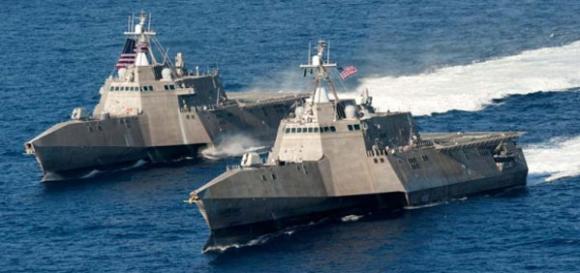 The saga of the US Navy’s Littoral Combat Ships (LCS) continues. The ships were intended to be small, versatile and relatively inexpensive. So far they have succeeded only in being small. The Navy intends to have around 30 of these ships built and so far has commissioned eleven. This year, the Navy plans on not deploying any of the LCS. Maintenance issues have many of LCS tied to the dock. The program itself is not new. The first LCS was commissioned a decade ago, but the problem-plagued ships have seen relatively little actual service.
The saga of the US Navy’s Littoral Combat Ships (LCS) continues. The ships were intended to be small, versatile and relatively inexpensive. So far they have succeeded only in being small. The Navy intends to have around 30 of these ships built and so far has commissioned eleven. This year, the Navy plans on not deploying any of the LCS. Maintenance issues have many of LCS tied to the dock. The program itself is not new. The first LCS was commissioned a decade ago, but the problem-plagued ships have seen relatively little actual service.
The LCS, which early on earned the nickname “Little Crappy Ships,” are actually two different ships types. The Freedom Class are monohulls while the Independence Class is a trimaran design. Why the Navy chose to develop tow very different designs in parallel is the subject of some discussion. The LCS were originally intended to be built for around $200 million a copy. Their cost has not risen to close to $600 million each. Both classes have been plagued with reliability and maintenance issues. It is also unclear whether the LCS would have much a chance to survive actual combat. The ships were designed to highly modular able to switch between various mission configurations, but this flexibility has proven to be largely illusory.

 A
A 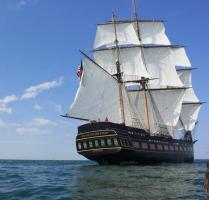
 A new study has found record quantities of microplastics in sea ice. The
A new study has found record quantities of microplastics in sea ice. The  A new race is being organized for 2019 and 2020 to celebrate the 500th anniversary of the discovery of the
A new race is being organized for 2019 and 2020 to celebrate the 500th anniversary of the discovery of the  We have been following the
We have been following the  The extremely small ship Adventure sails on. Last year
The extremely small ship Adventure sails on. Last year 
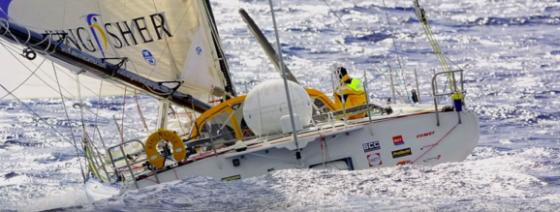 I realize that I am in a rut. Every Earth Day, I say the same thing. Over 70% of the surface of this planet is covered by water, so referring to the planet as “earth” is just wrong. But be that as it may, the misnamed planet is still called Earth and Earth Day is a worthwhile celebration of protecting the planet, both the soil and the watery portions. Below is a TED talk by one of the world’s great sailors, Dame Ellen MacArthur, about what she learned when she was sailing around the world alone. As she circled the globe alone, she began thinking about the idea of “the circular economy,” an intriguing insight. Definitely worth watching.
I realize that I am in a rut. Every Earth Day, I say the same thing. Over 70% of the surface of this planet is covered by water, so referring to the planet as “earth” is just wrong. But be that as it may, the misnamed planet is still called Earth and Earth Day is a worthwhile celebration of protecting the planet, both the soil and the watery portions. Below is a TED talk by one of the world’s great sailors, Dame Ellen MacArthur, about what she learned when she was sailing around the world alone. As she circled the globe alone, she began thinking about the idea of “the circular economy,” an intriguing insight. Definitely worth watching. The lobstermen of Maine are known for their independence. They don’t often ask for help. Like many other states, Maine has been struck hard by the opioid crisis. In many coastal communities, opioid addiction is taking a serious toll, particularly on lobstermen. How serious the problem is hard to say. Of the 376 people who died of drug overdoses in Maine last year, one cannot identify how many were fishermen as the state doesn’t keep records by profession. Anecdotally, however, the number appears to be disproportionately high. Some estimate that up to 50% of the stern men working in the $1.6 billion dollar a year industry have or have had problems with addiction.
The lobstermen of Maine are known for their independence. They don’t often ask for help. Like many other states, Maine has been struck hard by the opioid crisis. In many coastal communities, opioid addiction is taking a serious toll, particularly on lobstermen. How serious the problem is hard to say. Of the 376 people who died of drug overdoses in Maine last year, one cannot identify how many were fishermen as the state doesn’t keep records by profession. Anecdotally, however, the number appears to be disproportionately high. Some estimate that up to 50% of the stern men working in the $1.6 billion dollar a year industry have or have had problems with addiction. On Tuesday, the 149 passengers on Southwest Airline’s Flight 1380 were shocked when about 20 minutes after takeoff from New York, the plane’s left engine exploded, blowing a hole in the fuselage. The rapid depressurization sucked one woman passenger partially out of the plane. The explosion also damaged the left wing and the flaps.
On Tuesday, the 149 passengers on Southwest Airline’s Flight 1380 were shocked when about 20 minutes after takeoff from New York, the plane’s left engine exploded, blowing a hole in the fuselage. The rapid depressurization sucked one woman passenger partially out of the plane. The explosion also damaged the left wing and the flaps. Researchers have located
Researchers have located  Aerial surveys attempting to identify endangered right whales have spotted swarms of
Aerial surveys attempting to identify endangered right whales have spotted swarms of  The Flettner fleet is growing slowly but steadily. The LNG powered cruise ferry
The Flettner fleet is growing slowly but steadily. The LNG powered cruise ferry  In June of 1912, Joseph Conrad wrote “
In June of 1912, Joseph Conrad wrote “ Two short accounts of seals showing up in somewhat unexpected places.
Two short accounts of seals showing up in somewhat unexpected places. 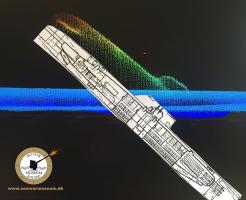 The
The 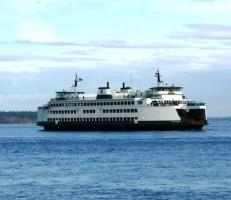 Talk about unintended consequences. The Washington State Ferry system and the US Coast Guard have a problem with forgotten bicycles. Over the last 18 months, 12 bicycles have been left aboard ferries, including three bike-share bikes. This turns out to be a rather big deal. Because a forgotten or abandoned bicycle might suggest that the owner could have gone overboard, it can trigger a search and rescue operation by Coast Guard and ferry personnel until the bicyclist can be confirmed safe.
Talk about unintended consequences. The Washington State Ferry system and the US Coast Guard have a problem with forgotten bicycles. Over the last 18 months, 12 bicycles have been left aboard ferries, including three bike-share bikes. This turns out to be a rather big deal. Because a forgotten or abandoned bicycle might suggest that the owner could have gone overboard, it can trigger a search and rescue operation by Coast Guard and ferry personnel until the bicyclist can be confirmed safe.